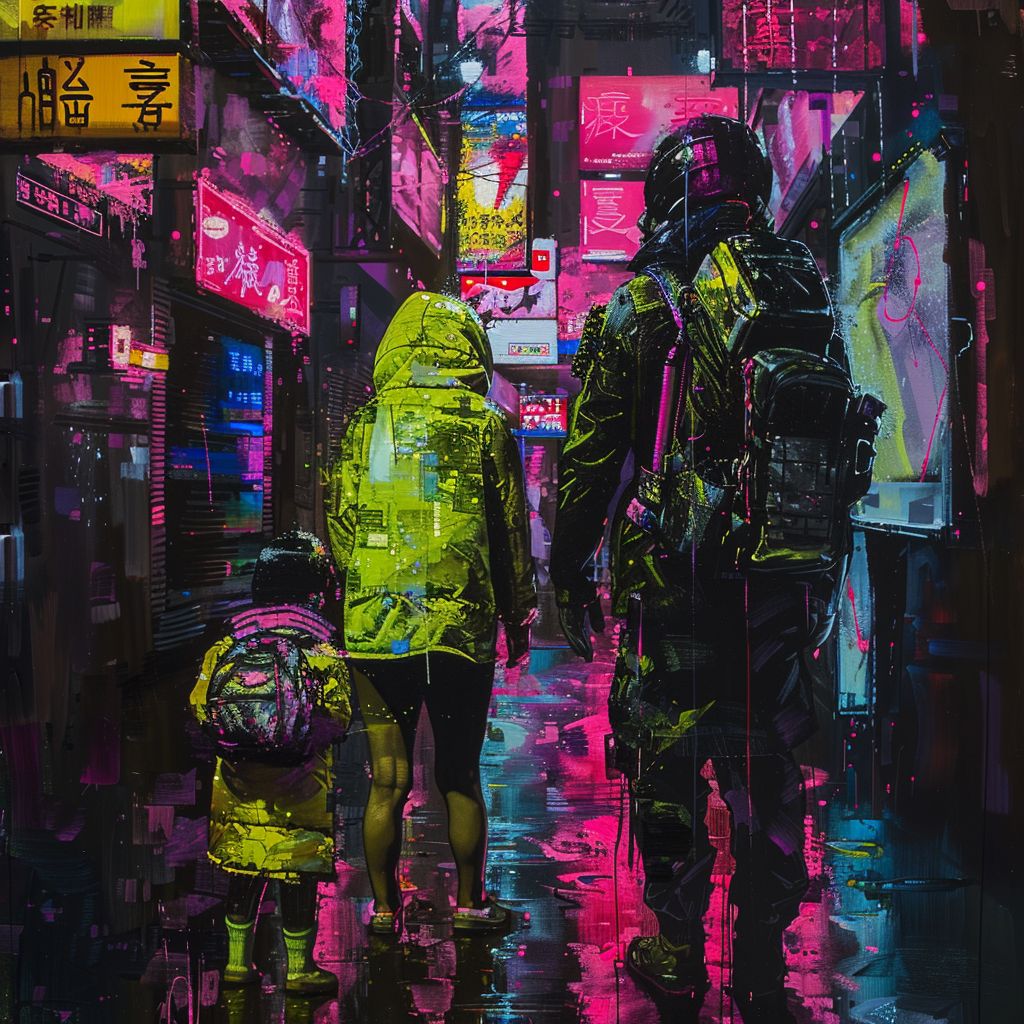- Cyborg Bytes
- Posts
- This Law Will Kill Free Speech Forever
This Law Will Kill Free Speech Forever
1. What Exactly Is Chat Control—and Why Should You Be Worried About It?
Your phone’s already scanned your face. What happens when it starts scanning your private messages too?
They’re calling it “Chat Control.” It’s being rolled out across the EU, pitched as a way to stop child abuse online. Sounds reasonable, right? But what’s actually being built is something very different—a government-mandated surveillance system embedded directly into your phone.
The law behind it—the CSA Regulation—forces platforms, even encrypted ones like Signal and WhatsApp, to comply with something called a “detection order.” That’s a legal command to scan all private messages. Every image. Every video. Every text. By default.
And here’s how it works:
Client-side scanning: Before you even hit send, your phone scans the content.
Perceptual hashing: It compares your files against a database of known abuse material, even if you’ve cropped or filtered them.
AI classifiers: These try to guess if something might be grooming or abuse—even if it’s not. Even if it’s completely out of context.
Here’s the part most people haven’t heard: your encryption keys live on your device. That’s what makes end-to-end encryption work.
But if the scan happens before encryption?
Then encryption doesn’t matter. Your messages were already read. Already scanned. Already flagged.
That’s what makes this different. It’s not scanning on the platform’s servers. It’s happening on your device. On your operating system. On your own hardware. And the rules? They’re invisible. The classifiers update silently. The thresholds shift. The database grows. One day it’s abuse material. The next, it’s dissent. Leaked files. Protest organizing. Copyrighted PDFs. Anything someone in power decides is “harmful.”
So the obvious question is:
If this is really about saving kids, why aren’t they using the powers they already have?

2. If They Already Have the Tools, Why Are the Worst Predators Still Here?
The biggest child abuse forum on the dark web had millions of users—and it wasn’t shut down by the police. It was shut down by a journalist.
Governments already have powerful surveillance tools. They’ve had them for years.
Subpoenas. Geolocation. Wiretaps. Payment tracing. Undercover stings. AI scraping systems. Metadata matching. International warrants. Whole networks of cross-border data sharing.
And still—the abuse continues.
At NCMEC, the U.S. agency tasked with managing abuse reports, millions of tips are sitting unanalyzed. These are not vague or hypothetical. They come with usernames, IPs, timestamps, and real abuse files. The same is true for Europol and Interpol. Massive backlogs. Known offenders. No action.
In Germany, the largest CSAM darknet forum ever discovered—3.7 million accounts—operated in plain sight. The police didn’t take it down. They didn’t even request it be taken down. A journalist picked up the phone and shut it down in under a week.
In the U.S., predators who’ve been reported reoffend while their files sit in queues. The FBI has kept forums live to “gather intelligence” while abuse continued in real time. And the Epstein files? Still sealed. Protected. Off-limits.
The pattern is clear:
Predators are inconvenient. Whistleblowers are liabilities. And the system protects power first.
Even platforms play the same game.
When Schlep exposed predator networks inside Roblox, he didn’t get rewarded—he got banned.
The predators? Still there. Probably profitable. Probably spending.
This isn’t about a lack of capability. It’s a lack of will.
So the real question is:
If they’ve already decided not to act on known predators, what exactly is the point of scanning everyone else?
3. What Happens When “Protecting Kids” Becomes the Excuse for Total Surveillance?
Every surveillance program starts the same way—by pointing at someone no one wants to defend.
Child abusers. Terrorists. Traffickers. It always starts with someone monstrous. Someone who makes it hard to argue back. That’s the point. Fear makes the rollout smooth.
Here's the pattern:
Step 1: Invoke real harm. Something horrific that kills debate.
Step 2: Target a group no one will stand up for—pedophiles, sex workers, undocumented migrants, whistleblowers.
Step 3: Build the infrastructure. Scanners. IDs. Logging systems. Backdoors.
Step 4: Once it’s live, expand the targets. The law updates. The scope widens. Suddenly the system is scanning for political dissent, protest messages, copyrighted memes, “misinformation.”
And the kicker? The system never shrinks. It just gets handed off to new departments.
This isn’t theory. Leaked EU documents show that Europol has already lobbied to repurpose Chat Control scanning tech—not for child abuse, but for general law enforcement use.
Which means the thing being installed on your device under the label of “protection” is already being repositioned for everything else.
They say it’s to protect kids. But once the infrastructure is there, it can scan for anything. They don’t need to build a new tool. They just need to rewrite the rules.
So if this pattern keeps repeating—always starting with a real harm and ending with sweeping surveillance—
where have we seen this exact move before?

4. When Has This Happened Before—and How Did It End?
You’ve seen this movie before. You just didn’t realize it was a franchise.
Governments don’t retire surveillance powers. They evolve them. Every time there’s a crisis, they expand their reach. And every time, it sticks.
2001 – The Patriot Act:
After 9/11, the U.S. passed what was supposed to be a “temporary” anti-terror law. It gave birth to mass metadata surveillance, secret courts, and bulk collection programs that never went away.
2013 – Operation Chokepoint:
The DOJ quietly pressured banks to cut off “high-risk” businesses. Legal industries like sex work, crypto, and gun sales got debanked without warning. They weren’t outlawed. They were just made unbankable.
2018 – SESTA/FOSTA:
Sold as an anti-trafficking law. In practice, it wiped out online safety nets for sex workers and pushed people back into dangerous offline situations. Even the DOJ admitted it backfired.
2023 – UK Online Safety Bill:
Touted as a way to keep kids safe. It legalized the scanning of private messages for “harmful content”—a phrase so vague it could mean anything. Pressure is already building to expand its reach to misinformation and extremism.
2025 – UK Digital IDs:
Pitched as a tool for controlling illegal immigration. It’s now expanding into banking, employment, and healthcare. One ID system, tied to everything.
Every one of these laws started with urgency and ended with long-term control.
And now, Chat Control is following the exact same arc.
They’re not stopping the pattern. They’re perfecting it.
So if this history is already written—
who actually benefits from keeping it going?
5. Who Actually Benefits From Chat Control—and Who Gets Left Behind?
The people building the scanners aren’t the ones being watched. You are.
Let’s stop pretending this is about catching the worst people on Earth. Because if it were, those people wouldn’t still be here. The elites who traffic in real harm? Protected. The executives running platforms that allow abuse to thrive? Untouched. The whistleblowers trying to fix it? Banned. Silenced. Fired.
The incentives are crystal clear. And they don’t point toward safety.
Predators are inconvenient. They’re messy, politically risky, sometimes connected to powerful people or profitable accounts. Investigating them takes resources, coordination, and real-world accountability.
But you? You’re easy. You’re searchable. You’re profitable.
Surveillance is scalable.
Governments love it because it creates leverage they never have to give back. One tool that can police, preempt, and punish, all in one package.
Platforms love it because data is money, and the people generating the most engagement—the whales, the predators, the extremes—are often too valuable to lose.
The public? We’re just the easiest group to control. Most people won’t notice a silent update to their phone. Most won’t read the policy change. And by the time it affects them, it’s too late.
That’s the machine:
Predators are hard.
Whistleblowers are dangerous.
Ordinary citizens? Perfect targets.
So if the people who should be held accountable are shielded—and the people raising alarms are punished—
who exactly is this system being designed to monitor?

6. Is Chat Control Just the Next Chapter in a Pattern That Never Ends?
Same playbook. Different packaging. New tech. More reach.
Every few years, a new fear is weaponized to justify more surveillance. This time it’s CSAM. Before that, it was terrorism. Before that, it was trafficking. Every single rollout starts with urgency and ends with control.
Chat Control fits perfectly into that cycle.
The pretext: “We need to protect children.”
The target: the one group no one will defend.
The tech: scanners, AI classifiers, surveillance built into every device.
The real risk: mission creep. Scope expansion. Quiet repurposing.
And we already know how it expands. These terms are already in EU and UK policy drafts as acceptable scanning categories:
“Extremism”
“Radicalization”
“Hate speech”
“Misinformation”
“Disinformation”
“Election interference”
“Financial fraud”
“Terror propaganda”
The tech doesn’t care what it’s looking for. It just needs input and a trigger.
Once the scanners are in place, what gets flagged is just a matter of political timing. A new administration. A major protest. A financial panic. An election cycle.
It always starts small. It always expands. And it never rolls back.
So if the stated purpose was child protection, and the system is already being retooled for law enforcement and political control—
what does that tell you about where this is headed next?
7. Why Were Predators Allowed to Operate Freely—Even After They Were Reported?
The worst part isn’t that the system failed. It’s that it looked the other way—on purpose.
When predators are reported and nothing happens, it’s not a bug in the system. It’s a decision. Governments and platforms already have the tools to act: subpoenas, data sharing, geolocation, AI scraping, sting operations. But they’re not being used to stop abuse. They’re being used to build new surveillance infrastructure instead.
The numbers aren’t abstract. Millions of abuse reports—with photos, usernames, IPs—are just sitting unprocessed inside NCMEC, Europol, and Interpol. These are solid leads. Traceable offenders. Real children at risk. And still—ignored.
In Germany, the biggest CSAM forum ever found had 3.7 million accounts and ran for years. Not because it was too hidden. Because no one bothered to send a takedown request. A journalist picked up the phone and shut it down in days.
In the U.S., known offenders have been repeatedly flagged—then left alone. Some reoffended while their reports collected dust. Meanwhile, the FBI kept abuse forums online just to “watch what happened next.” And while children were still being harmed, the agents sat and observed.
And the elites? The powerful ones?
The Epstein network remains sealed. Protected. Immune. And when whistleblowers like Schlep exposed predator networks inside platforms like Roblox, they were banned. Not the predators. The guy who spoke up.
Why? Because whistleblowers are a liability. Predators, sometimes, are profitable. Whales. Heavy spenders. High engagement. Easy to ignore.
This isn’t a case of “we couldn’t do anything.”
They could. They just didn’t.
So the real question is:
If these systems aren’t being used to protect kids, what should we actually be building instead?

8. What Would It Look Like If We Actually Prioritized Child Protection?
If your phone can scan every photo you send, how can governments not process a basic abuse report?
The infrastructure exists. The reports are there. The resources? Not even close. If stopping child abuse were truly the goal, we’d be funding real solutions—not embedding surveillance into every device.
Here’s what actual child protection looks like:
Fully funded, specialized units focused on child exploitation. Not trauma-overloaded moderators. Real investigators. Trauma-informed. Properly trained.
No more tip backlogs. Enforce deadlines. Track outcomes. Publish dashboards. Transparency or nothing.
Mandatory takedown protocols for verified abuse content. No more “still online two weeks later” excuses.
Cross-border coordination that matches how abuse actually works. Abusers don’t stop at jurisdiction lines—why should enforcement?
Accountability for the powerful. The Epstein list is still sealed. Until the elite are prosecuted too, trust will keep breaking.
Care for victims. Not just digital cleanup. Real resources. Legal support. Ongoing safety. Community-centered care.
And none of this requires breaking encryption. None of it requires treating every user like a suspect.
It requires money, courage, and the political will to face abuse without weaponizing it.
Want to fight Chat Control? Start here:
Share this piece. Help people understand what’s actually being built.
Push back. Contact your reps in the EU. Support EDRi, NOYB, European Pirate Party, and local privacy coalitions.
Use tools that don’t spy on you. Choose open-source encryption. Compartmentalize your digital life.
Protect whistleblowers. Amplify them. Support takedown teams. Build legal defense networks.
Stay loud. Because silence is what this system depends on.
So if the system isn’t being built to protect children—
who is it really designed to watch?
9. What Happens When Surveillance Infrastructure Never Gets Turned Off?
Once a scanner gets installed, it doesn’t disappear. It just gets reassigned.
Governments don’t build surveillance tech for one use and walk away. They keep it. They rebrand it. They expand it. The tools outlive the crisis, every time. That’s not speculation—it’s documented history.
The Patriot Act was pitched as a temporary response to 9/11. That “emergency” still powers warrantless surveillance over two decades later. Secret courts. Bulk data collection. Dragnet programs that never sunset. The original threat fades—but the tools don’t.
That’s what makes something like Chat Control so dangerous. Not just the content it targets today—but the fact that the infrastructure can scan for anything tomorrow. The code is already in your pocket. All it takes is a software update. A policy shift. And suddenly, that scanner isn’t watching for predators—it’s watching you.
And you won’t know when it changes. You won’t get a prompt. There won’t be a pop-up. The same tech that’s sold to you as “child safety” can be repurposed to track dissent, analyze memes, flag keywords, log protests, map private groups.
Once client-side scanning becomes standard, the target list becomes a dropdown menu.
So what do you do when your government builds tools designed to treat every citizen like a suspect?
You stop asking for permission—and start building defenses.
You use encryption that doesn’t rely on trust. You compartmentalize. You choose free, open-source tools over black-box apps with PR teams and backdoor partnerships. You build your own infrastructure—legal support networks, mutual aid, takedown teams, whistleblower protections. You teach others to do the same.
You stop waiting for the system to care about protecting you.
And you start asking the real question:
What kind of society can survive when mass surveillance becomes default?

10. What’s Left If We Let This Pattern Keep Playing Out?
You’ve seen this movie before. Chat Control is just the latest sequel. But this time, the ending lands on you.
They told us mass scanning would stop predators.
It didn’t.
They said digital ID systems would secure borders.
They didn’t.
They said SESTA/FOSTA would stop trafficking.
It erased safety nets and made it worse.
The Patriot Act was supposed to stop terrorism.
It gave us permanent dragnet surveillance.
Even Roblox didn’t ban the predators—it banned the whistleblower who exposed them.
Every time, the pattern repeats. A moral panic. A massive overreach. A promise of safety that somehow always expands surveillance and leaves the most dangerous people untouched.
And now they want to embed scanners into every device and sell it as “protecting children.”
But this was never about kids. If it were, the predators would already be gone.
Chat Control is about control.
The surveillance systems being built right now aren’t temporary. They’re not narrow. They’re not secure.
They’re permanent.
And unless we fight to stop it—unless we bake privacy into the core of how we build, communicate, and resist—then this scanner won’t be for the next threat.
It’ll be for you.
So the only question left is—what are you going to do about it?